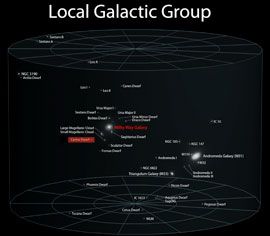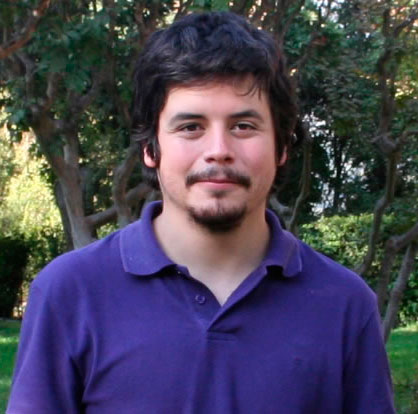|
||||||
Astronomers solve key aspects about the puzzling formation of the Carina Galaxy
The discovery explains how the Carina dwarf galaxy -located at 300 thousand light years from Earth- formed their stars. These findings were published on the current volume of The Astrophysical Journal.
The work shows that the stars in Carina were formed in two separate events. “The first one took place in the complete extension of the galaxy, and then –one billion years later- a second episode formed stars again but this time only in the central regions”, explains Ph.D. Felipe Santana, lead author of the article and postdoctoral researcher of the astronomy department at Universidad de Chile.
Before this investigation, astronomers thought that the Milky Way was the one igniting the star formation episodes of Carina each time both galaxies came close to each other, nevertheless, “Our observations prove the exact opposite… the evolution of this galaxy was caused by internal processes” tells us Ricardo Muñoz, Associate Professor at Universidad de Chile.
The missing piece of the puzzle
“Our analysis showed that after the dwarf galaxy (Carina) formed, its first stars started to die and explode as supernovae, which inject an enormous amount of energy to the surrounding medium. This energy was transferred to the gas in the galaxy, which expanded and increased its temperature”, continues Muñoz
“When this occurred, the gas could no longer keep forming stars, and thus, the galaxy went through a period of more than a billion years in which it was completely inactive. After this, the gas eventually cooled, and contracted again falling to the center of Carina, where it formed stars again for five more billion years” clarifies the postdoctoral researcher.
The study provides a physical explanation consistent with observations to a phenomenon that is closely related to the formation of the Milky Way. “The dwarf galaxies like Carina, orbit our galaxy in the same way the Moon orbits the Earth. The theory indicates that the Milky Way was formed by the merge of objects of this type in the early Universe. Therefore, reconstructing the formation of dwarf galaxies is analogous to reconstructing the formation history of our own Galaxy”, concludes Santana.
The article entitled “A MegaCam Survey of Outer Halo Satellites. VI: The Spatially Resolved Star Formation History of the Carina Dwarf Spheroidal Galaxy”, was based on observations performed with the Magellan II telescope, at the Las Campanas Observatory, which belongs to the Carnegie Institute of Science. The research represents 2 years of work from Chilean astronomers, Santana, Guzmán, and Muñoz, along with a team of 6 astronomers from North America and Europe.
In order to see the original publication at The Astrophysical Journal click here
|
|
Share | Tweet |

|
||
|






